7 Best Glute Bridge Variations (with Pictures!)
For working the glutes, hamstrings and core in a low-impact fashion, few exercises compare to the highly popular glute bridge.
The exercise is so popular, in fact, that quite a number of different variations have been developed so as to further enhance it.
Although the sheer number of variations to choose from can get overwhelming, we suggest starting out with the basic glute bridge. Once you’ve mastered it, add further intensity in the form of a hip thrust, or switch to single-leg bridges instead.
What are Glute Bridges?
Glute bridges are a type of compound exercise that features marked use of hip extension to target the muscles of the posterior chain.

Most often, glute bridges are performed entirely as an unweighted exercise, requiring significant volume to reach the desired level of training intensity.
The majority of glute bridge variations simply change how much weight is distributed to the posterior chain muscles with each repetition. This is usually achieved by altering the orientation of the legs or elevating the torso.
Glute Bridge Variations
1. The Conventional Glute Bridge
The conventional glute bridge is simply the regular glute bridge that all novices should learn prior to attempting more complex variants.

It begins with the lifter lying on their feet and upper back, requiring them to squeeze their glutes so as to extend the hips upwards. This targets the hamstrings and core as well.
Like most other glute bridge variations, the conventional bridge can be performed either unweighted or with a weight set atop the hips.
Defining Benefits as a Glute Bridge Variation
As the baseline form of glute bridge, the conventional glute bridge is excellent for maximizing volume and working the posterior chain without the need for more advanced technical familiarity.
In addition, the glute bridge is also quite effective as a method of improving core stability, especially in regards to the lower section of the abs.
How-to:
In order to perform a repetition of the glute bridge, the lifter will lie on their back, drawing their knees up so the feet are flat on the floor, hip-width apart. The palms may be set on the ground for greater stability, if needed.

Now in the correct stance, the lifter will squeeze their glutes and brace their core - pushing their pelvis upwards until a diagonal line can be traced from the top of the knees to the torso.
From this point, the lifter should slowly return their hips back to the floor so as to complete the repetition.
2. The Single-Leg Glute Bridge
The single-leg glute bridge is exactly as it sounds; a conventional glute bridge performed with one leg extended straight out. This shifts more of the body’s weight to one side, upping the intensity without the need for additional weight.
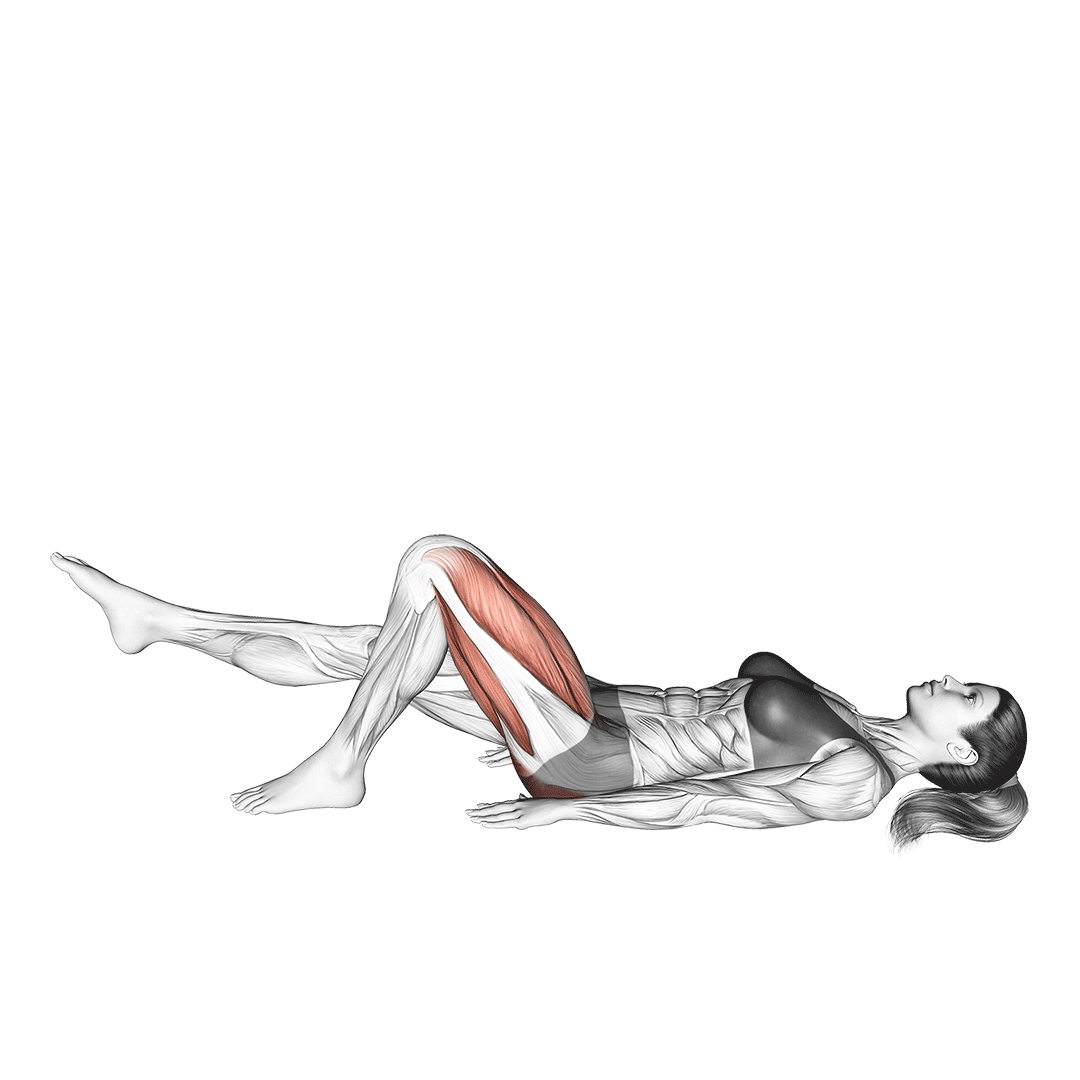
Being a unilateral exercise, the single-legged glute bridge can effectively be used as a progression exercise from the conventional variation - both in terms of complexity and sheer strength needed.
Defining Benefits as a Glute Bridge Variation
Apart from allowing for progression to occur and greater recruitment of the posterior chain, the single-leg glute bridge also works the core to a more intense level than other variations. This, of course, is on account of its unbalanced stance requiring the core to work harder.
How-to:
To perform a repetition of the single-leg glute bridge, the lifter will first lie on their back with their knees drawn up, feet set hip-width apart and hands on the ground for greater stability.

Then, extending one leg straight out, the lifter will contract their glutes and push their hips upwards, balancing on their one remaining leg.
Once the hips are fully extended and a line can be drawn from the top of the knee to the shoulders, the lifter lowers their hips back down. This completes the repetition. Don’t forget to repeat the movement with the opposite side.
3. The Elevated Glute Bridge
Elevated glute bridges are a glute bridge variation where the lifter will elevate their feet off the ground, usually with the use of an exercise bench or box. This increases the movement’s range of motion and allows for greater hamstring recruitment to occur.
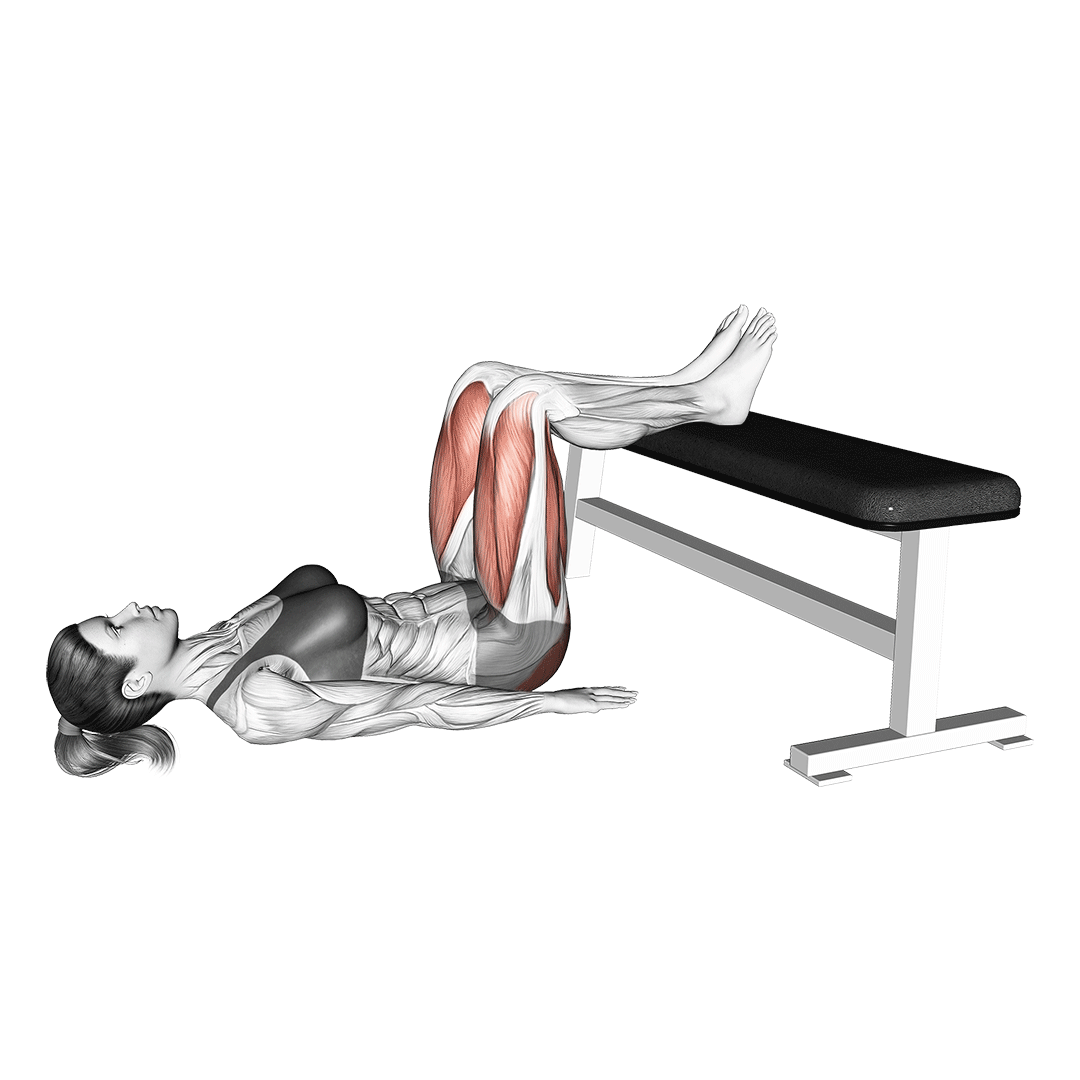
The elevated glute bridge may be used as a direct progression from its conventional variation, so long as the lifter ensures a full range of motion is being completed.
Defining Benefits as a Glute Bridge Variation
The defining benefit of the elevated glute bridge is its greater range of motion. This is due to the legs being elevated higher than the body, forcing the glutes and hamstrings to work through a wider range in order to reach the apex of the movement.
In addition, because the legs are elevated in such a manner, the hamstrings and core muscles will both be contracted more as well.
How-to:
To perform a repetition of the elevated glute bridge, the lifter will lie on their back with their heels elevated atop an exercise bench or box, knees bent. The arms and hands may be stretched out besides the torso for greater stability.

Now in the correct stance, the lifter will contract their core, keep their lower back neutral and squeeze their glutes. This should raise the pelvis upwards, straightening the lower body until a line can be followed from the knees to the chest.
From this point, the lifter may lower their pelvis back to the starting position so as to complete the repetition.
4. The Hip Thrust
Technically its own subsection of exercise; the hip thrust is a more advanced and intense version of the conventional glute bridge, often being performed with the addition of weight and an elevation of the torso.
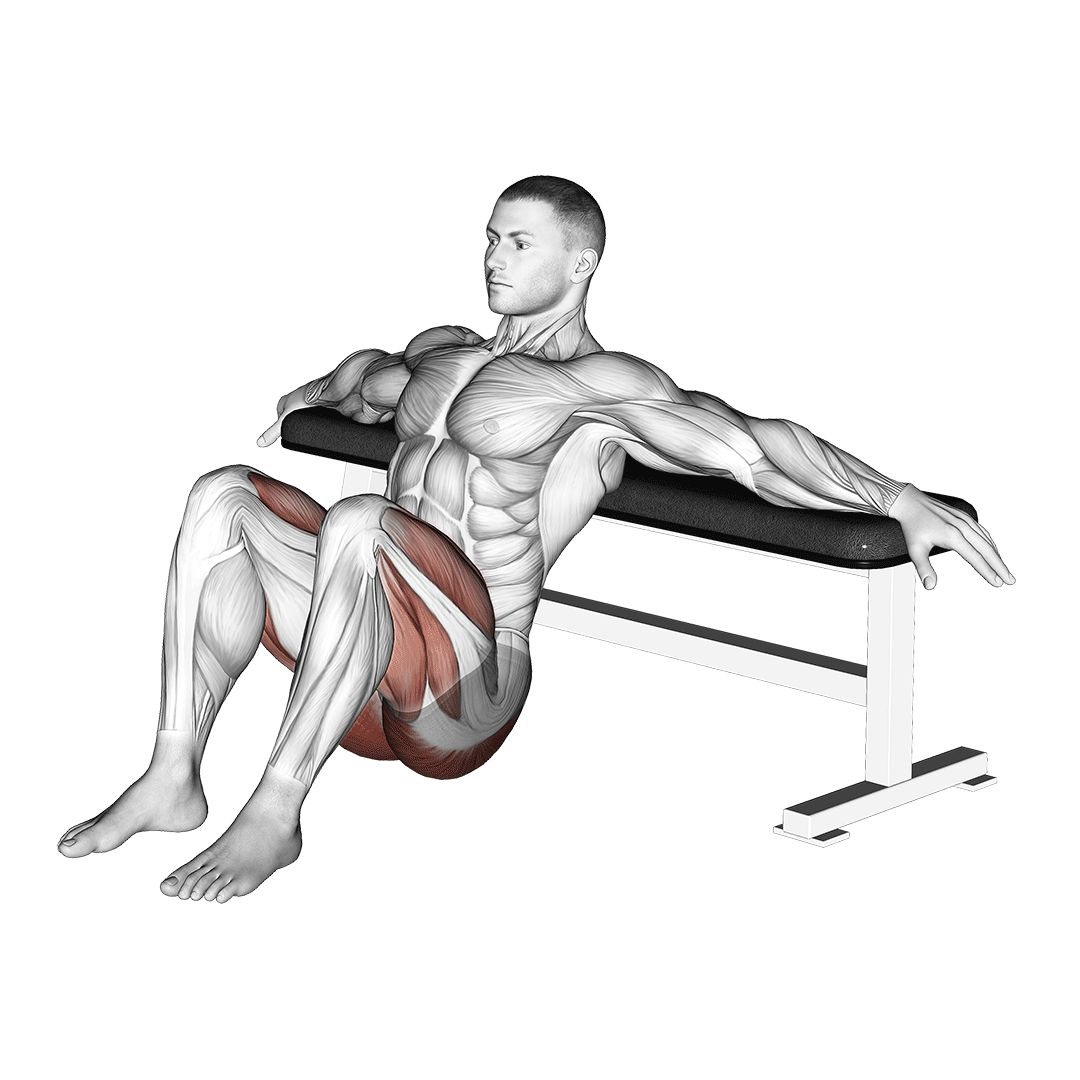
Like other glute bridge variations, the hip thrust is characterized by its marked use of posterior chain musculature to extend the hips.
Despite its different range of motion on account of a higher torso position, the hip thrust is somewhat more popular as it is easier to perform with barbells or dumbbells.
Defining Benefits as a Glute Bridge Variation
Hip thrusts place greater emphasis on the glutes due to the elevation of the torso placing them in a more advantageous position.
Combining this benefit with the hip thrust’s greater opportunity for weight loading allows bodybuilders and athletes to target their posterior chain to a far more effective level.
How-to:
To perform a repetition of the hip thrust, the lifter will place their upper back against an exercise bench, keeping their legs in front of them with the knees bent and the feet planted. The hips should be at a lower elevation to the rest of the body, weight resting atop it if performing the movement weighted.
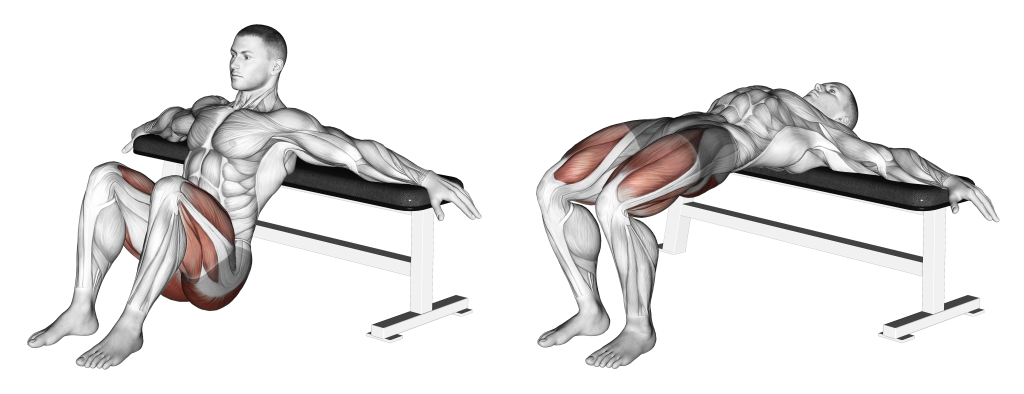
From this stance, the lifter will squeeze their glutes and push their pelvis upwards, straightening their torso until it forms a flat plane from knee to chest.
Once at the terminal point of their range of motion, the lifter will slowly lower their hips back down until they’ve assumed the starting stance.
This completes the repetition.
5. The Staggered Glute Bridges
Staggered glute bridges are a variation of glute bridge performed with the legs in a staggered position. This particular type of bridge is most similar to the single-leg variation, although with both heels nonetheless still touching the floor.
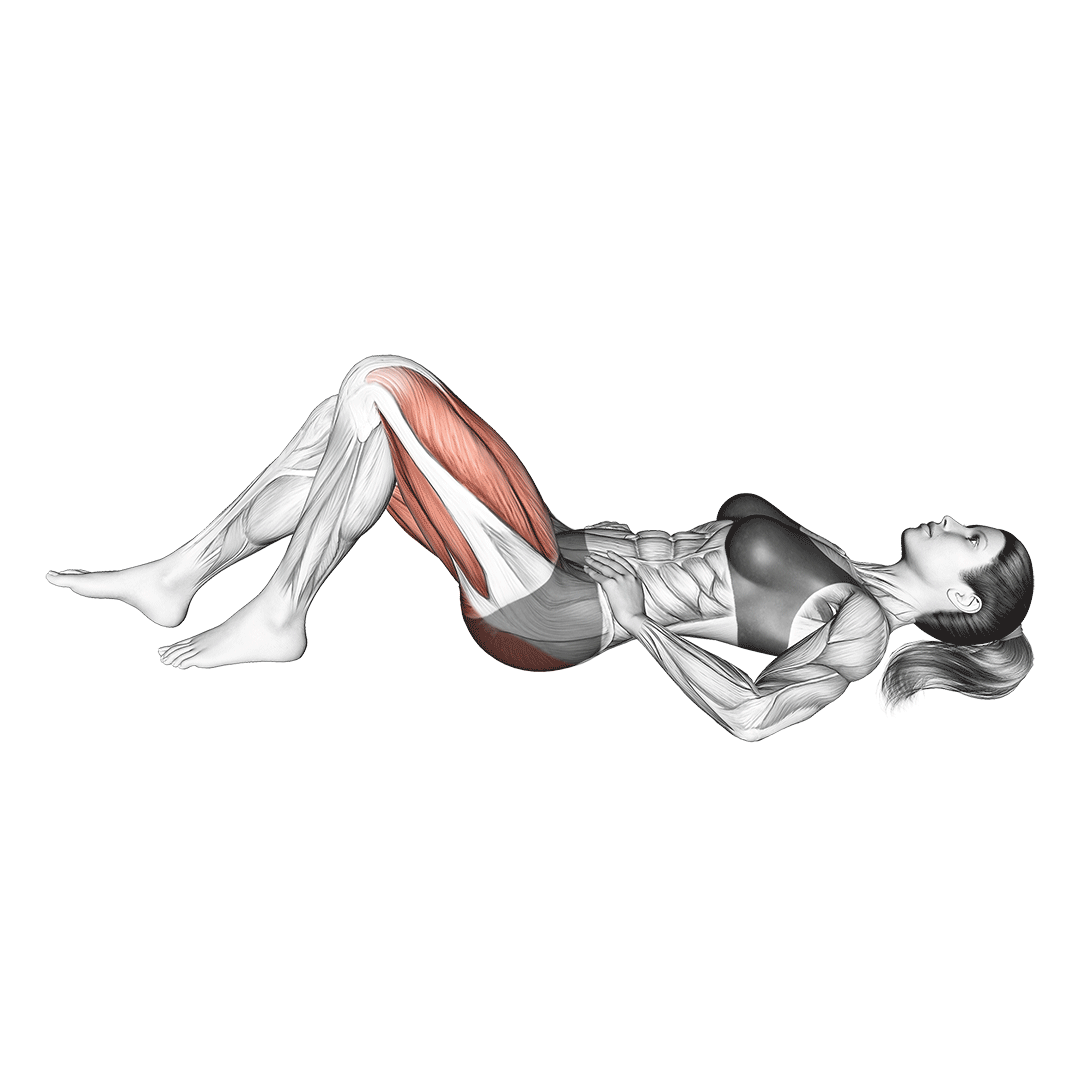
Rather than elevating one leg straight into the air, the staggered glute bridge will simply place one leg further ahead of the other.
This effectively relegates the extended leg to a supportive role, sharing the benefits of the single-leg glute bridge but without the same difficulty balancing.
Defining Benefits as a Glute Bridge Variation
Staggered glute bridges feature the same benefits as single-leg bridges - those being benefits such as greater emphasis on one side at a time, greater recruitment intensity and correction of muscular imbalances.
Of course, it does all this without the same level of intensity or the same demand for balance as its single-leg counterpart.
How-to:
To perform a staggered glute bridge, the lifter will first assume a conventional glute bridge stance with their feet flat on the ground hip-width apart.

Rather than keeping them aligned however, the lifter then slides one foot forwards until only the heel remains touching the floor. The body’s weight should be shifted towards the working leg, with the extended one acting solely as a source of balance.
Now with only one leg bent, the lifter will squeeze their glutes and thrust their hips into the air, maximizing their range of motion.
Once the hips are as high as possible, the lifter slowly returns their pelvis to the ground so as to complete repetition.
6. The Tabletop Bridge
The tabletop bridge is a low-impact bridge variation that has the lifter extend their arms alongside their hips, forming a tabletop with the body as it is supported by all four limbs.
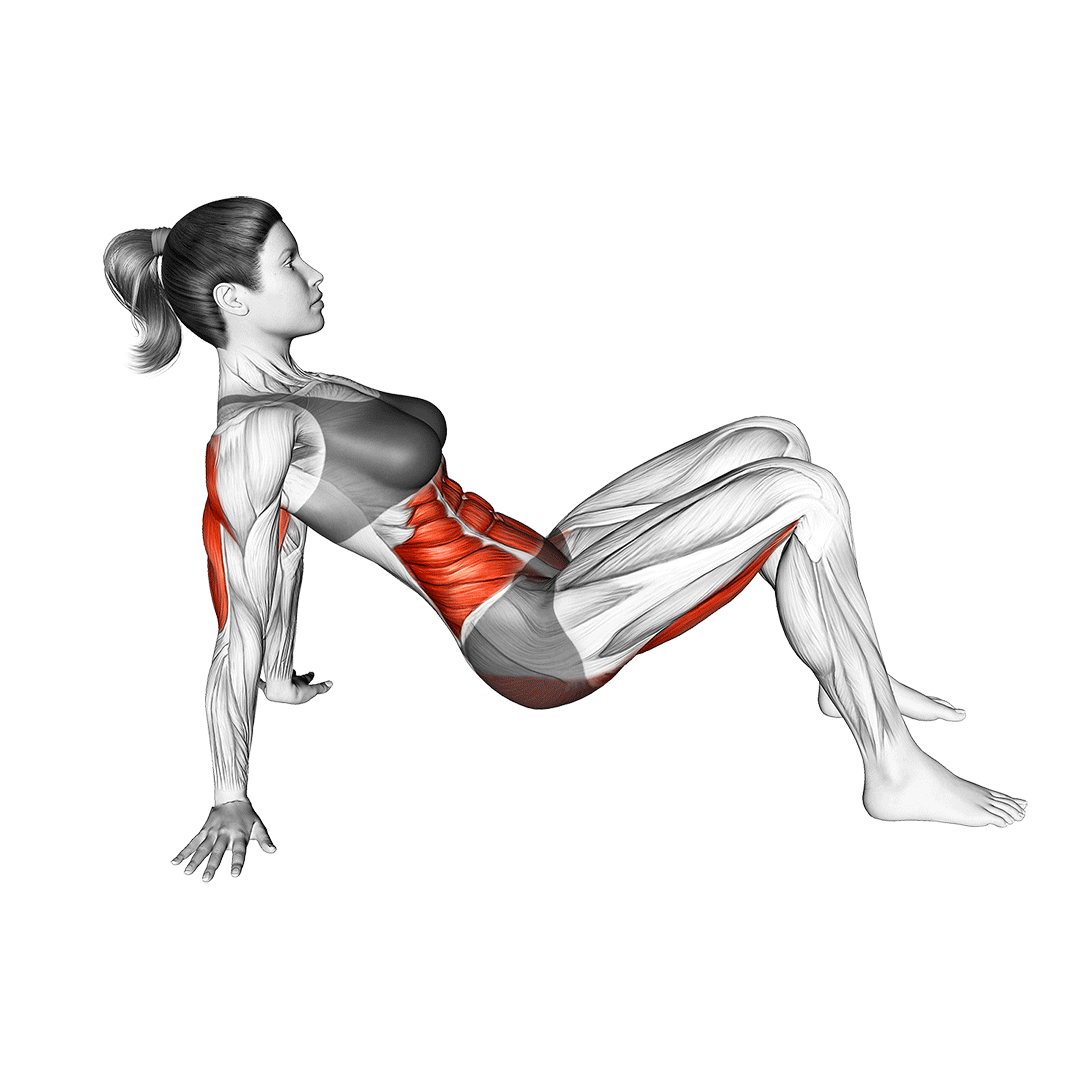
While primarily used as a stretch, the tabletop bridge can also be used as an effective method of targeting the posterior chain and core in an isometric capacity. If doing so, it is best to reduce volume and instead focus on stretching out the length of each individual repetition.
Defining Benefits as a Glute Bridge Variation
The tabletop bridge functions as both a stretch and as a form of isometric training. This can be quite useful for individuals with poor mobility in the hips or shoulders - both of which are targeted by the movement.
In addition, lifters seeking greater glute and core endurance will benefit from using this exercise as a supplementary movement.
How-to:
To perform a repetition of the tabletop bridge, the lifter will begin by sitting on the floor with their hands flat behind their back and their knees drawn up. The soles of the feet should be squarely against the ground.

From this stance, the lifter will simultaneously contract their glutes and push their chest upwards, bracing their core as they do so.
This should draw the body into a table-like shape, with the arms fully extended and the knees nearly parallel to the shoulders.
The lifter then holds this position for several counts before lowering themselves back to the starting stance - thereby completing the repetition.
7. The Straight-Leg Bridge Hold
The straight-leg bridge hold is a glute bridge variation where the lifter keeps their legs elevated and straight throughout the set, instead focusing on isometric contraction while in a full bridge stance.
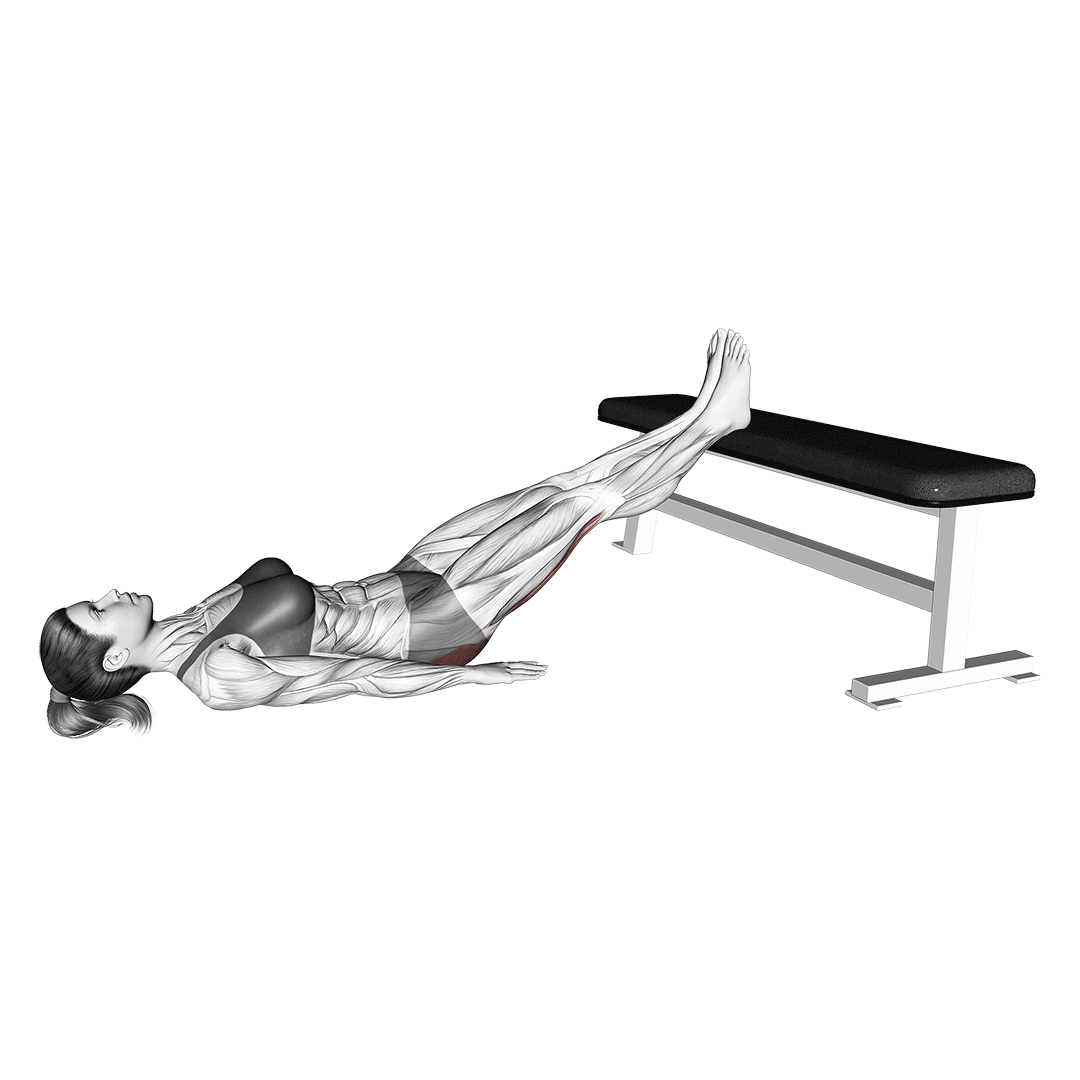
Like the tabletop bridge, this particular variation focuses more on static movement and time under tension, meaning that a reduction in volume may be needed.
Defining Benefits as a Glute Bridge Variation
The straight-leg bridge hold is quite effective for building stability and endurance in not only the glutes, but also the core as well. This makes it highly effective as an accessory movement in a variety of different lower body workouts.
How-to:
To perform a repetition of the straight-leg bridge hold, the lifter will elevate their heels atop an exercise bench or box, spreading their arms out beneath or beside them for stability.

From this position, the lifter will straighten their knees and squeeze their glutes, pushing their hips upwards until a decline line is formed from torso to feet. They will hold this position for several seconds before returning the hips to the ground - thereby completing the repetition.
Which Glute Bridge Variation Should You Pick?
Although each glute bridge variation serves its own individual purpose - for most training goals, the hip thrust and conventional glute bridge should be sufficient.
Other variations like the tabletop bridge or elevated bridge exist so as to correct weaknesses in your physique that the conventional variation cannot. Unless your training goals specifically call for these variations - it’s likely that the hip thrust or conventional bridge are your best bet.
References
1. Contreras, Bret., Cordoza, Glen. Glute Lab: The Art and Science of Strength and Physique Training. United States: Victory Belt Publishing, 2019. ISBN: 9781628601848, 1628601841
2. Lehecka BJ, Edwards M, Haverkamp R, Martin L, Porter K, Thach K, Sack RJ, Hakansson NA. BUILDING A BETTER GLUTEAL BRIDGE: ELECTROMYOGRAPHIC ANALYSIS OF HIP MUSCLE ACTIVITY DURING MODIFIED SINGLE-LEG BRIDGES. Int J Sports Phys Ther. 2017 Aug;12(4):543-549. PMID: 28900560; PMCID: PMC5534144.
